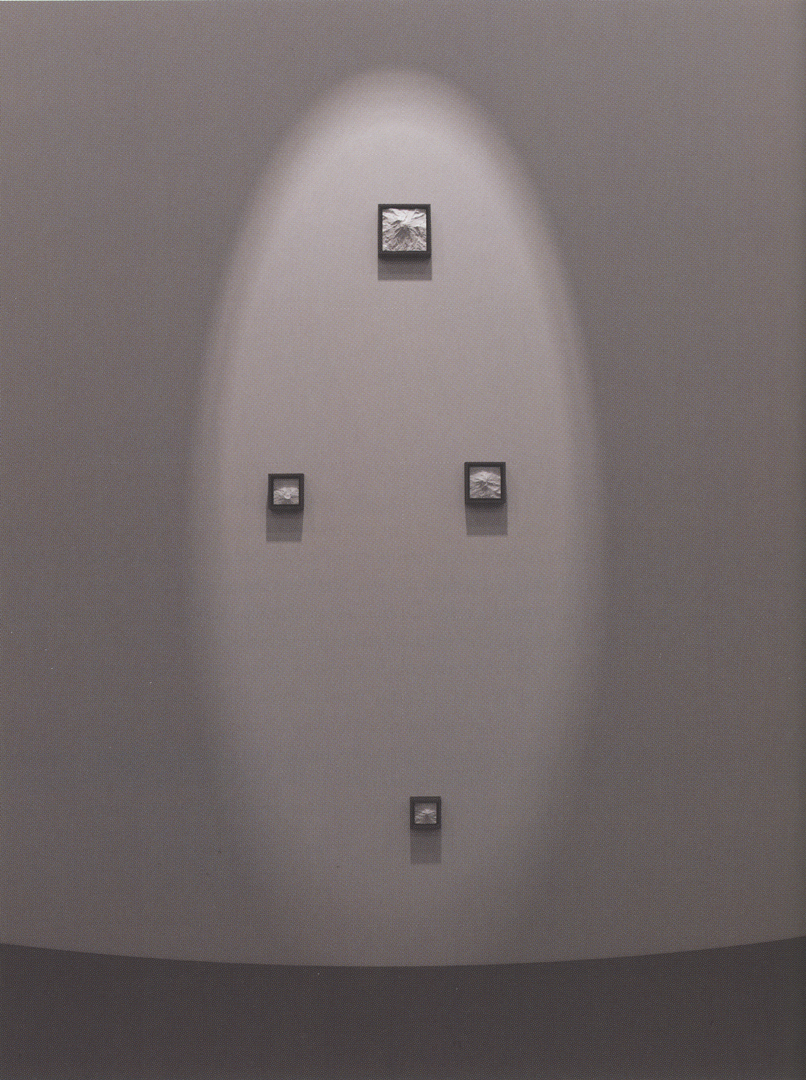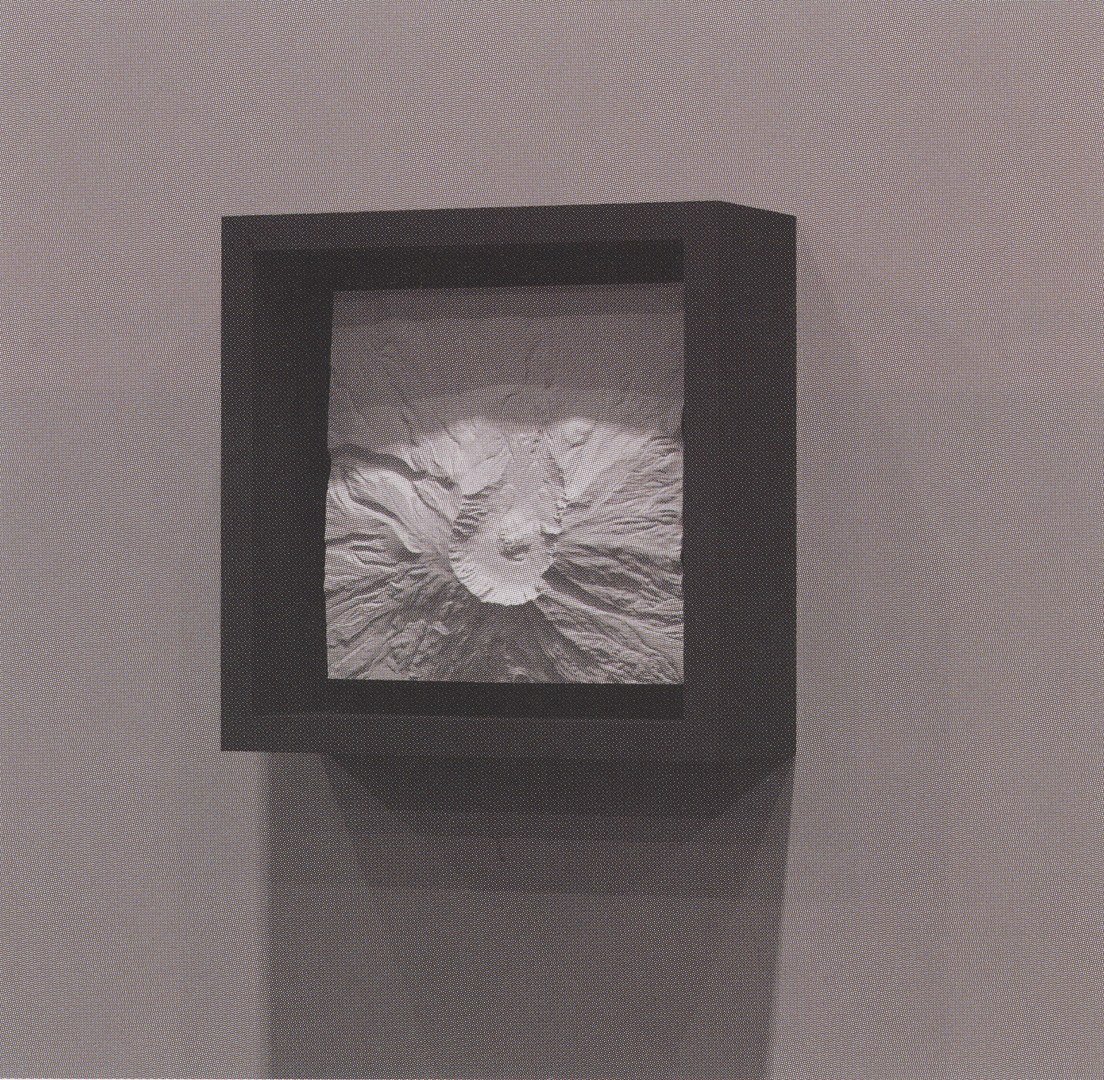Mark J Stock: Four Mountains
Artist(s):
Title:
- Four Mountains
Exhibition:
Creation Year:
- 2013
Category:
Artist Statement:
Four Mountains consists of tiny, rapid-prototyped models of four tall stratovolcanoes in the US Pacific Northwest, each isolated, framed, and arranged on the gallery wall to scale, viewed from above, from the point of view of a god (or an astronaut). It draws attention to not only the mountains’ detailed, crisp forms, but also to the empty spaces in between.
Contrast the attention given to the peaks with the empty spaces between them. The featureless gallery walls are a placeholder for ordinary landscape. This plane has no characteristic scale save that imposed by the mountains. The frames make a prison-like separation between the zones that reinforces their unequal standing. Sculpture is being reinvented by rapid-prototyping (30 printers) and alternative manufacturing techniques. The accurate mountain models in this work would not have been possible without several key pieces of computational geometry and image-processing technology, including LiOAR-acquired data from the US Geological Survey, 30 printing systems, and a number of pieces of custom and open-source software.
This project is a departure from my usual work, but does not stray far from my roots of using computational authorship to investigate natural phenomena from vantage points freed from the constraints of our beings. Much of my work leverages computational-physics software to generate alternate spatiotemporal realities, generally featuring fluid dynamics. But unlike physical fluid flows, the structure of which is normally observed indirectly, mountains are so massive and seemingly timeless that their visual forms are etched indelibly into our minds, and to see them any other way requires us to do something extraordinary. The act of miniaturization short-circuits this relationship. What was far away and dramatically steep is now just a corrugated sheet of laser-sintered nylon. What was once unattainable now fits in a pocket. By transforming the subject from its physical reality into the digital realm, we are able to manipulate it, free of the limitations of mass and energy, and thus break our traditional relationship with it.






